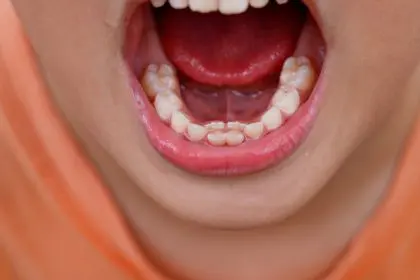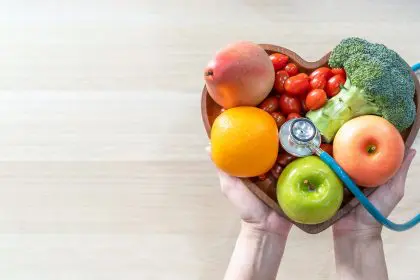Cake often conjures feelings of celebration, joy and indulgence. Whether it’s a birthday, wedding or simply a Friday night treat, the allure of cake is almost universal. However, for those who are conscious of their blood sugar levels — whether due to diabetes, prediabetes or simply trying to lead a healthier lifestyle — cake can feel like an off-limits indulgence. Does enjoying cake always mean suffering through sugar spikes and crashes? Fortunately, with a little awareness and some practical strategies, you can still relish that slice of cake without putting your blood sugar on a rollercoaster ride.
Balancing the joy of cake with health goals doesn’t mean deprivation; instead, it’s about making mindful choices. In this article, we’ll explore how to enjoy cake without worrying about sharp blood sugar spikes, so you can satisfy your sweet tooth while caring for your overall well-being.
The science behind blood sugar and cake
Before diving into how to enjoy cake more mindfully, it’s important to understand why traditional cakes can wreak havoc on blood sugar levels. Most cakes are high in refined sugars and carbohydrates — which are quickly broken down by the body into glucose. This can lead to a spike in blood sugar, followed by an inevitable crash that leaves you feeling tired, irritable or even hungrier than before.
For individuals with diabetes or those sensitive to sugar — these spikes and crashes can be particularly problematic. Managing blood sugar levels becomes essential for maintaining stable energy and preventing long-term health issues. So, how can you enjoy a slice of cake without falling into this trap?
Opt for low-glycemic sweeteners
One of the easiest ways to enjoy cake without the accompanying blood sugar spikes is to choose low-glycemic sweeteners. These sweeteners — such as stevia, monk fruit or erythritol — don’t cause a rapid increase in blood sugar levels the way traditional table sugar does. They can be used in baking recipes to create cakes that are just as sweet but far gentler on your system.
Low-glycemic sweeteners offer a way to indulge in cake without the guilt or the fear of a blood sugar rollercoaster. They also tend to be lower in calories, making them a win-win for those looking to cut down on sugar and overall caloric intake. By swapping out high-glycemic sugars for these alternatives, you can still create delicious, moist cakes that satisfy your cravings.
Focus on fiber-rich ingredients
Another excellent strategy is incorporating fiber-rich ingredients into your cake recipes. Fiber helps slow down the absorption of sugar into the bloodstream — which prevents those sharp spikes in blood glucose levels. Whole grains like almond flour, coconut flour or oat flour make great alternatives to traditional white flour — which is low in fiber.
Fruits like apples, bananas and berries can also add natural sweetness to your cake while boosting its fiber content. These fruits not only enhance the flavor but also provide essential nutrients that benefit your overall health. Adding seeds — such as chia or flax seeds — to the batter can further increase the fiber content without altering the cake’s texture significantly.
Add protein to your cake
Protein slows down the digestion of carbohydrates — which helps prevent rapid spikes in blood sugar levels. By incorporating protein-rich ingredients into your cake, you can enjoy your treat without worrying as much about blood sugar fluctuations.
Consider using ingredients like Greek yogurt, almond flour or protein powder in your cake recipes. These can help balance out the carbs from the flour and sugar — resulting in a more blood-sugar-friendly dessert. Plus, protein makes your cake more filling, which can prevent you from overindulging and reaching for that second or third slice.
Portion control is key
Even with healthier ingredients, portion control plays a critical role in preventing blood sugar spikes. The larger the slice — the more sugar and carbs you’ll be consuming. So while a small piece of cake might not cause a significant impact on your blood sugar, a larger portion can lead to a spike — even if the cake is made with low-glycemic or fiber-rich ingredients.
Being mindful of how much you eat is just as important as what’s in the cake. A small, well-portioned slice can allow you to enjoy the experience of cake without overloading your system with sugar. Remember, moderation doesn’t mean missing out; it means you get to indulge mindfully while staying in control of your health.
Pair your cake with blood sugar-stabilizing foods
Another effective way to minimize the impact of cake on your blood sugar levels is to pair it with foods that help stabilize glucose. Protein and healthy fats are your best friends here. Eating a slice of cake alongside a handful of nuts, some avocado or a serving of Greek yogurt can slow down the absorption of sugar — preventing sudden spikes.
For example, if you’re at a party and planning to enjoy cake, consider snacking on some almonds or having a protein-rich appetizer beforehand. By balancing the sugar with fat and protein, you’re giving your body the tools it needs to manage blood sugar more effectively.
Be mindful of timing
When you eat cake can also affect your blood sugar response. Consuming high-carb or high-sugar foods on an empty stomach may lead to faster glucose absorption — causing a more significant spike in blood sugar levels. On the other hand, if you eat cake after a balanced meal containing protein, fat and fiber, your body will digest the cake more slowly — which can help reduce the likelihood of a sugar spike.
Timing your dessert consumption is an easy and practical way to enjoy cake without causing dramatic changes in your blood sugar. Consider saving cake for after meals — or at least after consuming a high-protein snack.
Stay active
Physical activity is a great way to lower your blood sugar levels and improve insulin sensitivity. After enjoying a slice of cake, consider going for a short walk or doing some light exercise. This can help your body use up the extra sugar more efficiently — preventing it from lingering in your bloodstream and causing spikes.
Staying active not only helps with blood sugar control but also supports overall health and well-being. Even just 10 to 15 minutes of light exercise after eating can make a noticeable difference in how your body processes sugar.
Enjoying cake without the guilt
It’s possible to enjoy cake without the unwanted side effects of spiking your blood sugar. By making small adjustments — choosing low-glycemic sweeteners, incorporating fiber and protein, being mindful of portion sizes and pairing cake with stabilizing foods — you can indulge in your favorite dessert while still prioritizing your health.
The key is to shift your mindset from restriction to moderation and mindfulness. Cake doesn’t have to be an enemy of your well-being; with these strategies, it can remain a delightful part of your celebrations and daily life. Enjoy every bite, knowing that you’ve taken steps to protect your body and maintain your health.
This story was created using AI technology.
















